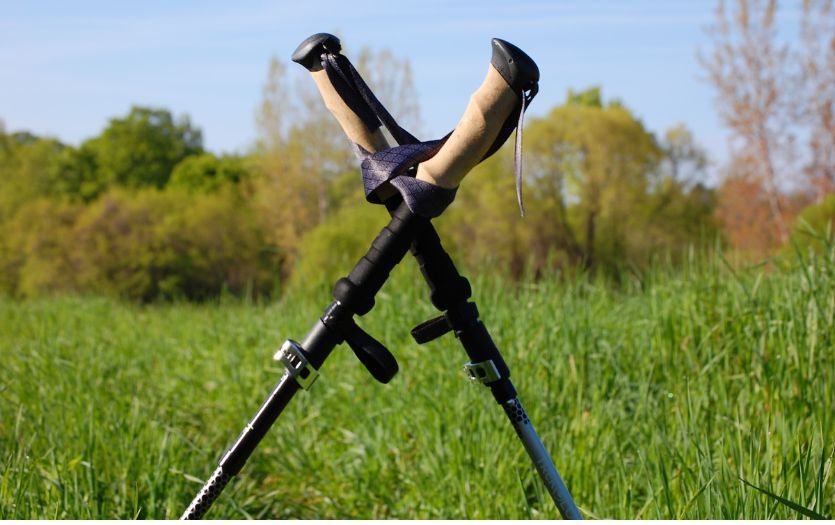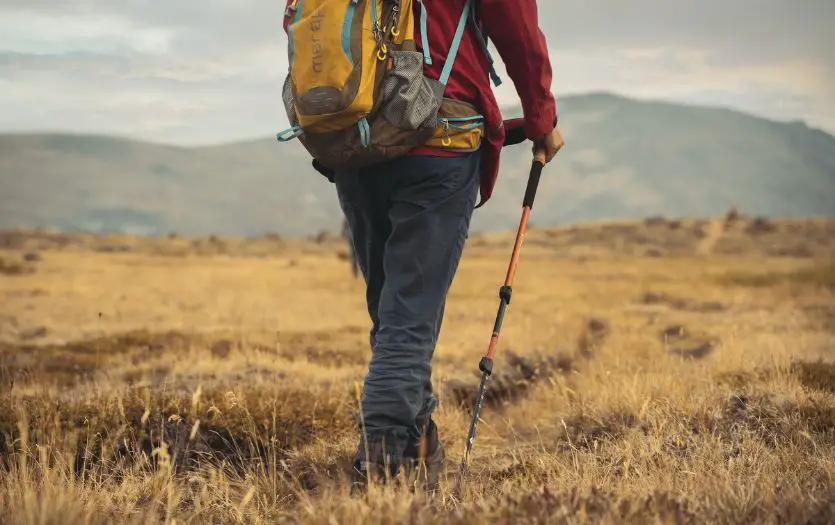Know How to Use Trekking Poles to Make Your Hike Less of a Struggle
Learn the proper techniques for using trekking poles for hiking, backpacking, and hunting. Discover the benefits and tips for selecting the best trekking poles for your next adventure.
If you're a hiker or a hunter, you know that trekking poles can make your hiking experience more enjoyable and less strenuous on your joints.
In this article, we'll be covering everything you need to know about trekking poles, including how to choose the right pair, how to use them properly, and some safety tips to keep in mind.
We'll also be discussing how trekking poles can help you navigate the terrain and support all your gear. So, grab your trekking poles, and let's get started on your next hunting adventure!
How to Choose the Right Trekking Poles

When choosing trekking poles for hiking or for your hunting trips, there are a few key factors to consider. Here are some things to keep in mind:
- Material: Trekking poles come in a variety of materials, including aluminum, carbon fiber, and titanium. Aluminum is the most affordable option and is a good choice for most situations. Carbon fiber and titanium are more expensive, but they are also more lightweight and durable.
- Length: The right length of the trekking pole is one that allows you to comfortably walk with your arms relaxed and your elbows slightly bent. To measure for the right length, stand up straight and place your arm at a 90-degree angle. The pole should come up to your wrist.
- Adjustability: Look for trekking poles that are adjustable in length. This will allow you to adjust the poles to different terrain and personal preferences.
- Handles: Many trekking poles have cork or foam handles, which are comfortable to hold and provide a good grip. Some poles also come with a wrist strap which can help you to keep the pole in your hand.
- Weight: The weight of the pole is another important factor to consider, especially if you're a hunter out in remote areas or hiking for an extended period. Look for a pole that is lightweight but also sturdy enough to support your weight and hunting gear.
- Tips: When choosing tips for your trekking poles, it's important to consider the type of terrain you'll be using them on. Here are some of the most popular types of trekking pole tips and the benefits they offer:
Rubber tips: Rubber tips are great for use on pavement, concrete, and other hard surfaces. They provide good traction and help to reduce noise.
Carbide tips: Carbide tips are perfect for use on rocky and icy terrain. They provide excellent traction and durability.
Basket tips: Basket tips are great for use in snow. They help to prevent your trekking poles from sinking into the snow and provide extra flotation.
Snow baskets: Snow baskets are specifically designed for use in deep snow. They provide extra flotation and help to prevent your trekking poles from sinking.
It's also important to note that some trekking poles come with interchangeable tips, which allow you to switch between different types of tips depending on the terrain. This is a great option for hunters who may be hunting in different terrains throughout the hunting season.
By keeping these factors in mind, you'll be able to choose the right trekking poles for your needs. Remember that good trekking poles are a great investment, they can improve your stability and help to reduce the stress on your joints while you're trekking through the wilderness.
How to Use Trekking Poles

Using trekking poles correctly will not only maximize their benefit but also provide a more enjoyable experience while out on the trail. Here is a step-by-step guide for proper technique:
- Hold the top of each pole with hands slightly wider than shoulder-width apart and point them downwards at 45-degree angles in front of you as you walk.
- Insert each pole into the terrain at a slightly downward angle
- Bend slightly at the elbow when pushing off
- Make sure your arms remain slightly bent and close together
- Turn the pole inwards toward you when going uphill and outwards away from you when heading downhill
- Plant each pole ahead of you in preparation for the next step
- Keep your palms facing downward during each stride
- Place all of your weight onto the pole when moving across uneven surfaces
- Adjustable wrist straps allow for adding tension or loosening based on preference; this provides additional control over long descents or difficult ascents.
Tips for using trekking poles on different terrains include shortening them or removing them completely when maneuvering through tight passages like fallen logs or streams.
Additional Tips
Here are some tips to help you get the most out of your trekking poles:
- Use the correct technique: When using your trekking poles, keep your arms relaxed and your elbows slightly bent. This will help to reduce stress on your joints and improve your balance. Make sure to plant the poles at a slight angle, rather than straight down, this will give you more stability.
- Walk with a rhythm: Try to walk with a steady rhythm when using your trekking poles. This will help you to maintain your balance and also make it easier to walk for longer periods of time.
- Use your trekking poles for more than just balance: Trekking poles can be used for more than just balance. You can use them to test the depth of a stream, probe for soft ground, or even push back branches while hunting. You can also use them in setting up a tarp shelter.
- Adjust the length of your trekking poles: Remember that the length of your trekking poles can be adjusted. You may need to shorten them for steep uphill climbs and lengthen them for downhill sections.
- Take care of your trekking poles: To get the most out of your trekking poles, make sure to take good care of them. Keep them clean and dry, and store them in a cool, dry place when not in use.
By following these tips, you'll be able to use your trekking poles to their full potential and enjoy the benefits they offer while hunting.
Safety Tips
In order to utilize your poles safely, it is vital to take some preventive measures and steer clear of certain common errors such as:
- Improper planting of both feet simultaneously can lead to trips due to a lack of control over uneven terrain.
- Positioning of hands too close together results in an unstable stance.
- Using too much pressure while pushing off can cause shoulder pain or overworking muscles due to strain throughout a hike and poor grip which causes slipping while handling obstacles like slippery rocks or ice patches.
- To prevent injury hikers should be mindful of their posture while using trekking poles; keeping core muscles engaged helps maintain proper balance without straining joints in knees or ankles.
Final Thoughts
Having a good pair of trekking poles can improve performance outdoors by giving hikers greater stability on uneven terrain as well as helping protect against fatigue and injury caused by long treks over varied surfaces.
And if you are a big game hunter, it is important to choose a durable trekking pole that will help you move through rough terrains along with the hauled meat more safely and efficiently. Make sure to tap the link below and visit our article on the best trekking pole for hunters for the most comprehensive guide available.


